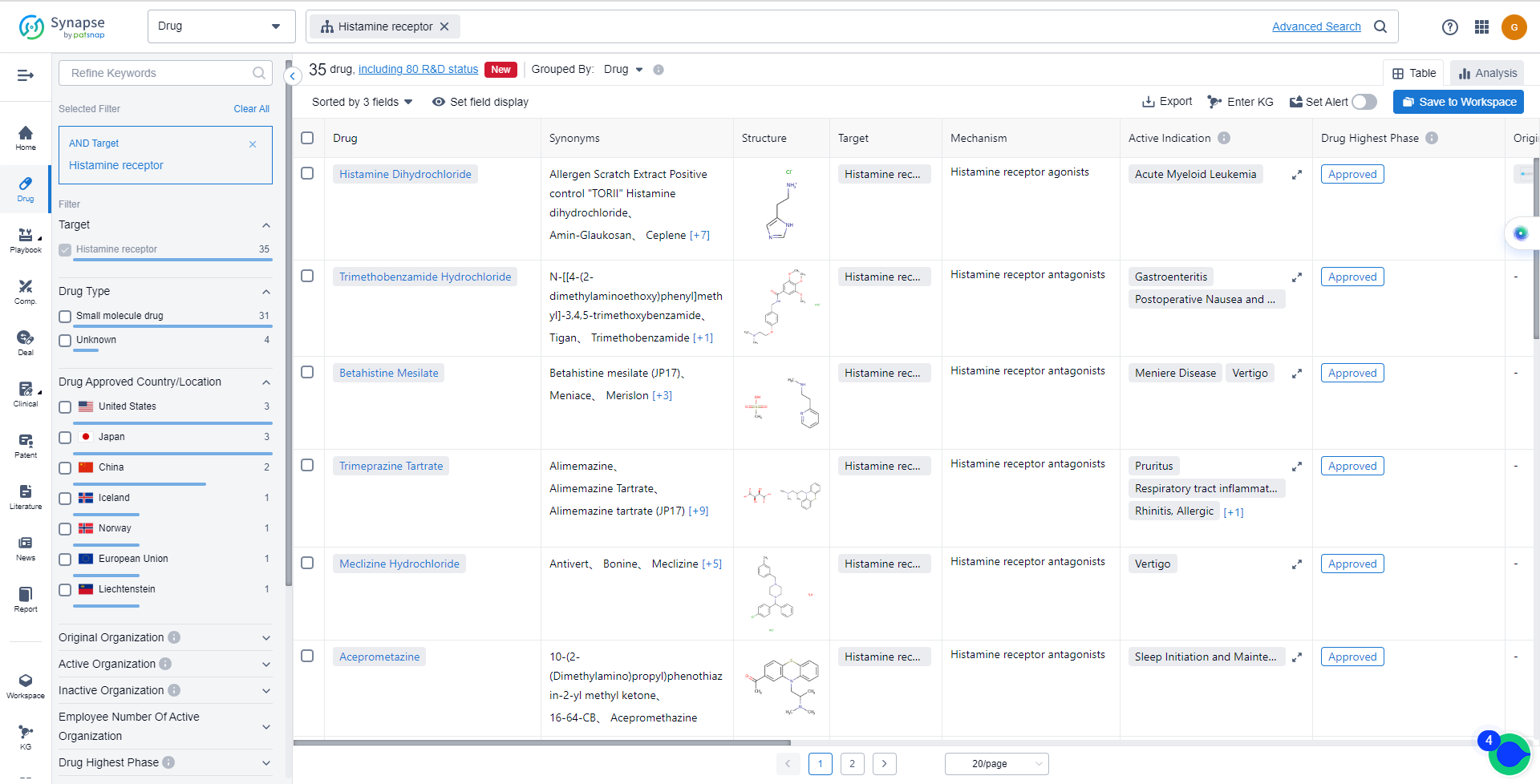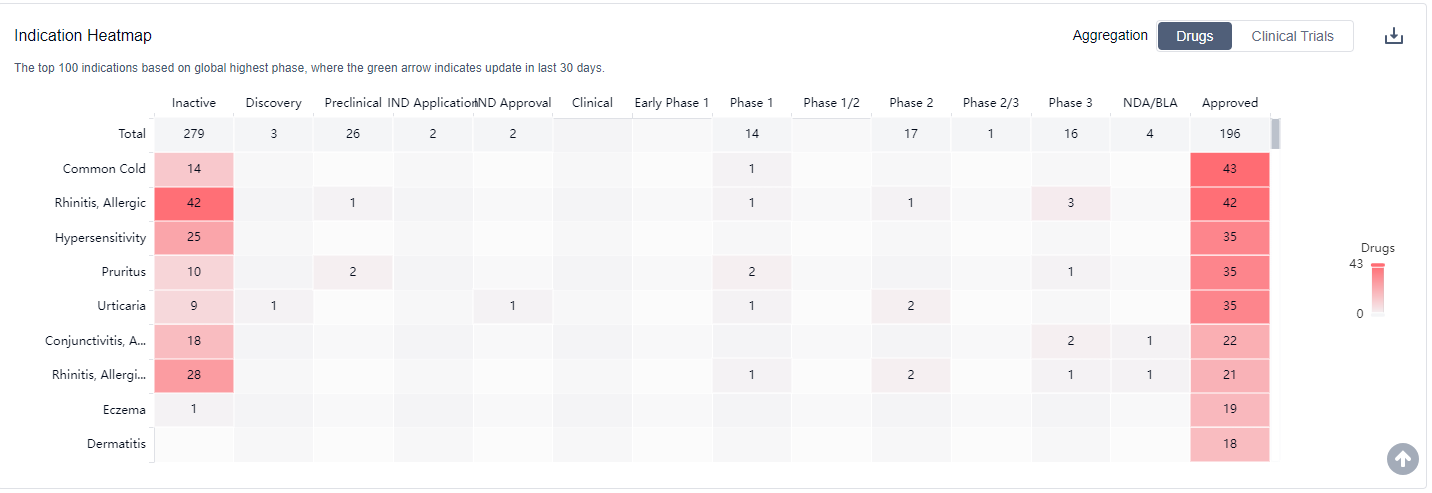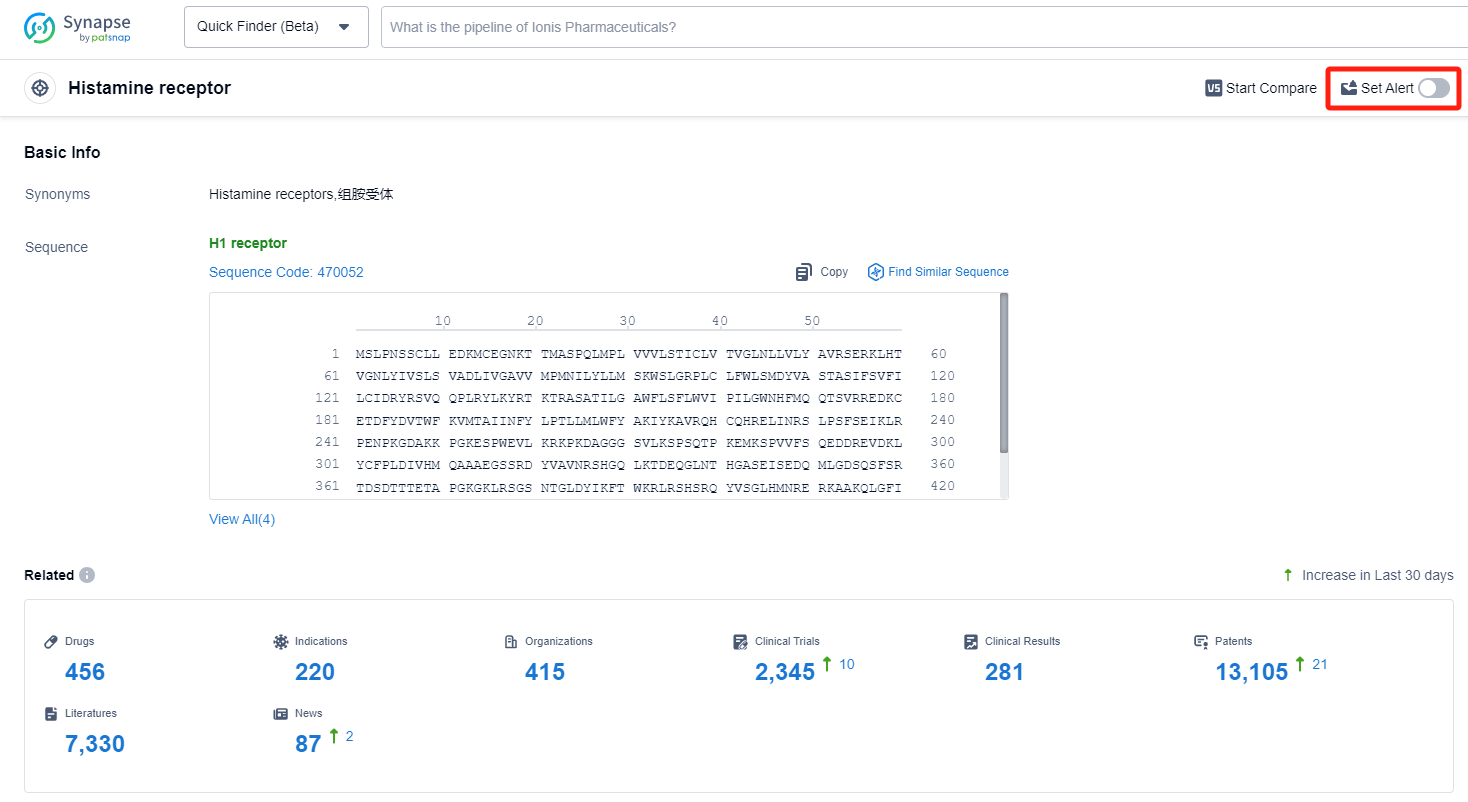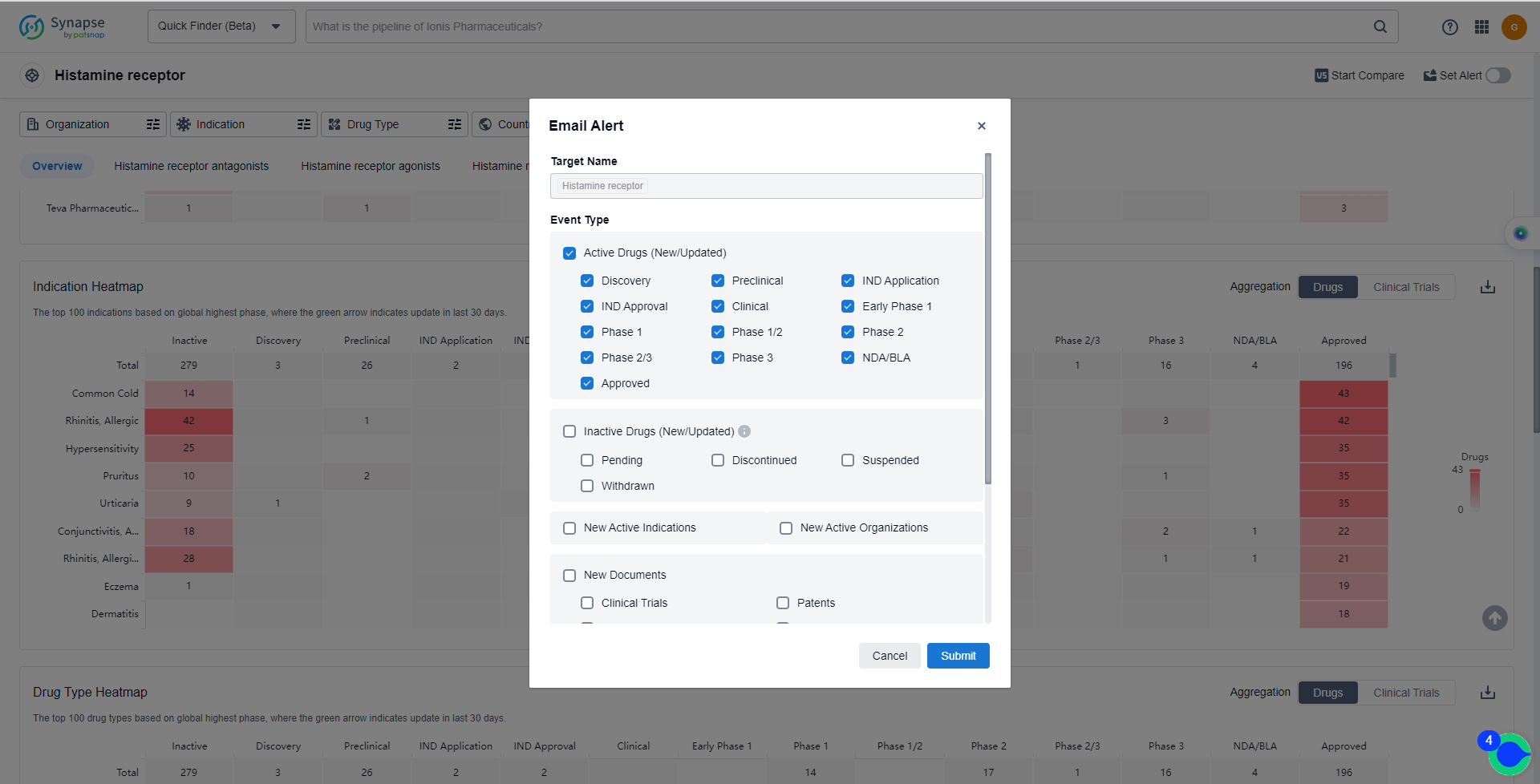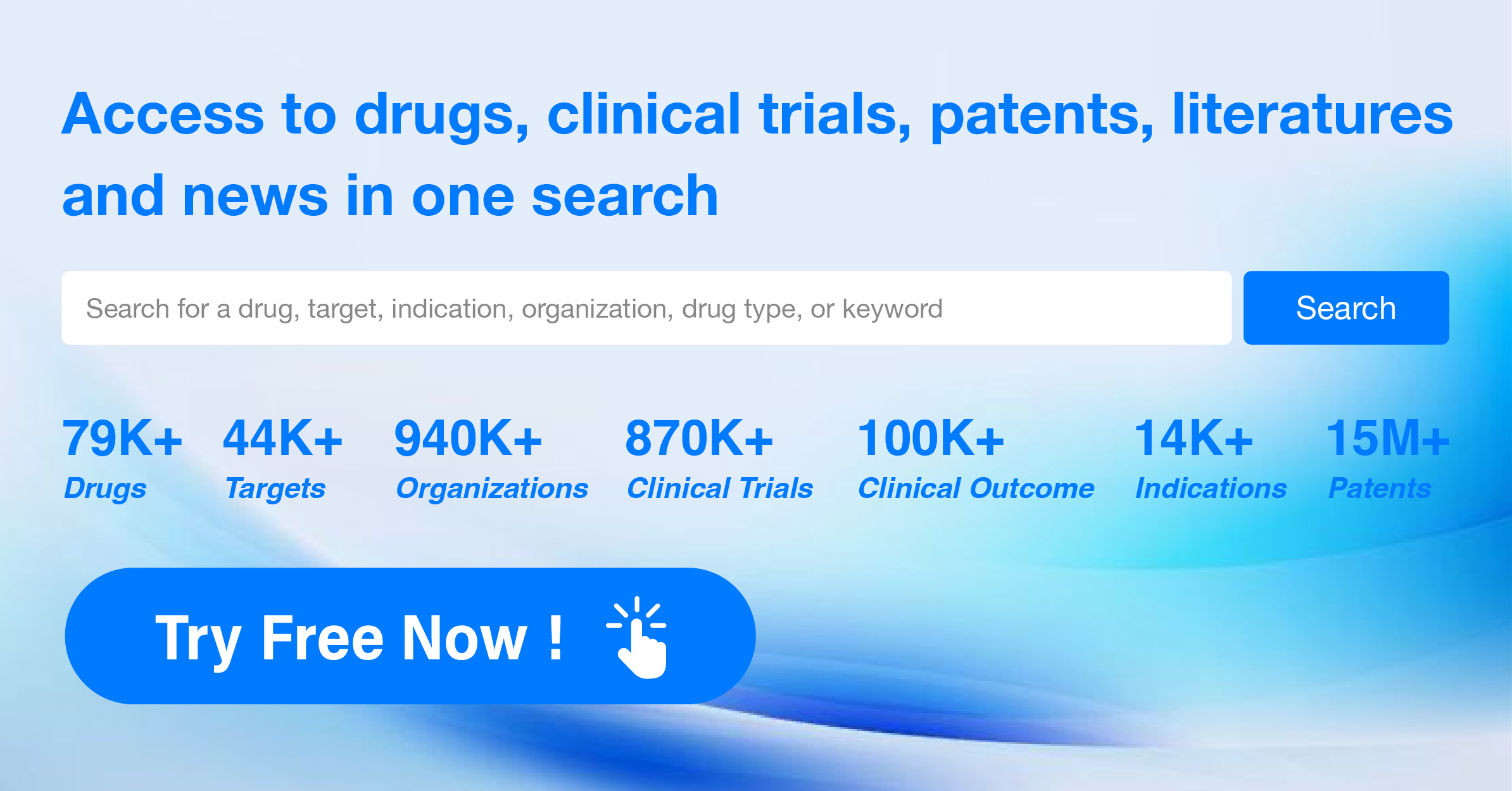Histamine receptor antagonists: What They Are and How to Stay Informed About Recent Advances
Histamine receptors are proteins found in the human body that play a crucial role in various physiological processes. They are primarily involved in mediating the effects of histamine, a chemical released by cells in response to injury or allergic reactions. Histamine receptors are classified into four types: H1, H2, H3, and H4. H1 receptors are present in smooth muscles, blood vessels, and the central nervous system, and their activation can lead to allergic reactions and inflammation. H2 receptors are mainly found in the stomach lining and are involved in regulating gastric acid secretion. H3 receptors are primarily located in the brain and modulate neurotransmitter release. H4 receptors are found in immune cells and are implicated in immune responses. Understanding the role of histamine receptors is crucial for developing drugs that target these receptors to treat various conditions.
Histamine receptor antagonists, also known as antihistamines, are a class of medications that block the action of histamine at its receptors. They are used to relieve allergic reactions and other conditions mediated by histamine. There are two main types of histamine receptors: H1 and H2.
H1 antagonists, also called H1 blockers, block the action of histamine at the H1 receptor, helping to relieve allergic reactions. They are used in the treatment of histamine-mediated allergic conditions.
H2 antagonists, sometimes referred to as H2RAs and also called H2 blockers, block the action of histamine at the histamine H2 receptors of the parietal cells in the stomach. This decreases the production of stomach acid. H2 antagonists can be used in the treatment of dyspepsia, peptic ulcers, and gastroesophageal reflux disease.
The analysis of the target Histamine receptor reveals a competitive landscape with multiple companies making progress in the development of drugs. GSK Plc and Sanofi are leading in terms of the highest stage of development, with several approved drugs. The indications for these drugs cover a wide range of conditions, including common cold, allergies, hypersensitivity, and more. Small molecule drugs are the most rapidly progressing drug type, indicating intense competition in the market. China, the United States, and Japan are the countries/locations developing fastest under this target, with China leading in terms of the number of approved drugs. The future development of the target Histamine receptor is promising, with ongoing research and development efforts by various companies and countries.
How do they work?
Histamine receptor agonists are a type of drugs that bind to and activate histamine receptors in the body. Histamine receptors are proteins found on the surface of cells, particularly in the respiratory tract, gastrointestinal tract, and central nervous system. When histamine receptor agonists bind to these receptors, they mimic the action of histamine, a chemical messenger released by the immune system in response to allergens or injury.
From a biomedical perspective, histamine receptor agonists are commonly used in the treatment of allergic conditions such as allergic rhinitis (hay fever), urticaria (hives), and allergic conjunctivitis. By activating histamine receptors, these drugs help to relieve symptoms associated with allergies, such as nasal congestion, itching, sneezing, and watery eyes.
Histamine receptor agonists can be further classified based on their selectivity for different types of histamine receptors, namely H1, H2, H3, and H4 receptors. Each subtype of histamine receptor has different functions and is found in different tissues. For example, H1 receptors are mainly present in the respiratory tract and are involved in allergic reactions, while H2 receptors are found in the stomach and play a role in regulating gastric acid secretion.
Overall, histamine receptor agonists are important therapeutic agents in the field of biomedicine, as they help to modulate the effects of histamine in various physiological processes and provide relief from allergic symptoms.
List of Histamine receptor Antagonists
The currently marketed Histamine receptor antagonists include:
- Histamine Dihydrochloride
- Trimethobenzamide Hydrochloride
- Betahistine Mesilate
- Trimeprazine Tartrate
- Meclizine Hydrochloride
- Aceprometazine
- Bamipine
- Dixyrazine
- Oxomemazine
- Histamine glutarimide
For more information, please click on the image below.
What are Histamine receptor antagonists used for?
Histamine receptor antagonists are commonly used in the treatment of allergic conditions such as allergic rhinitis (hay fever), urticaria (hives), and allergic conjunctivitis. For more information, please click on the image below to log in and search.
How to obtain the latest development progress of Histamine receptor antagonists?
In the Synapse database, you can keep abreast of the latest research and development advances of Histamine receptor antagonists anywhere and anytime, daily or weekly, through the "Set Alert" function. Click on the image below to embark on a brand new journey of drug discovery!
